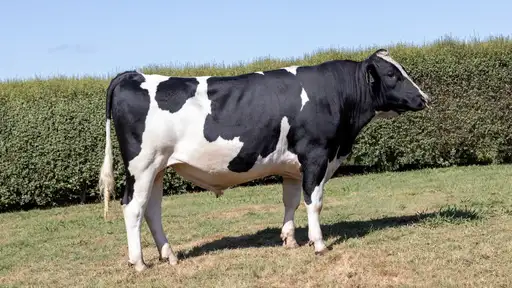By Edward Hardie, National FarmWise Manager
As another summer approaches crucial on-farm decisions will need to be made including if and when to:
- provide additional supplement;
- change the milking frequency, and/ or;
- dry cows off.
Decisions will become clearer as the season progresses, but some clarity can emerge now if farmers know their true profit margins (for example, what animals produce the most milksolids per kilogram of liveweight), and are therefore able to identify where the farm’s genuine profitability lies.
First things first
As the natural mate bulls enter herds at the tail-end of mating, check bull power is matching the number of cows cycling. It’s safest to work on one bull per 20 to 30 cycling cows.
If you’re doing all-AB, keep the heat detection aids in good order.
Use of short gestation length semen for the last 10-14 days of AB provides the advantage of mating for longer and lowering the empty rate, and retaining a relatively tight calving pattern.
Looking slightly ahead, ensure a pregnancy test plan is in-place (scanners get booked up quickly). Doing an early pregnancy test at 12 weeks can help with culling decisions, and in reviewing 6 week in calf rates.
Stay in control and be agile
When the mating period finishes, it’s important the feed plan is reviewed for the summer months ahead:
- What feed, pasture, crops, and supplements are stockpiled and contracted? Is there enough to cover a tough summer?
- What if the weather is significantly different from what’s planned, or milk prices change substantially? How can the feed plan, and livestock levels, be adjusted accordingly?
- How is pasture management best-optimised to achieve an effective rotation plan (including use of irrigation and fertiliser) to accomplish high-quality grass for milk production? Remember, it’s imperative the farm stays within nutrient and water-use limits.
- What circumstances or timings will be the triggers for a change to the plan? i.e. what are the catalysts for progressively drying off, culling, or moving animals off farm?
Contingencies, round lengths, supply and demand.
Three summer feed budget scenarios can certainly help: For example,
- a great summer;
- an average summer, or;
- a tough summer.
What resources are needed in each scenario?
A good plan of attack is to first reconfirm what your pasture cover is now, and what you intend to do based on current weather predictions.
Adjust the stocking rate and stock numbers early so pasture rotation can be lengthened in early summer – this is critical.
Plan fertiliser and nitrogen applications for late spring/early summer – generally this is a good time to get pasture cover accumulated.
The reason for adjusting round length out is to build Average Pasture Cover (APC), and to match rotation with the slowing leaf appearance rate.
Lengthening is done easily and quickly with supplements. However, if this is uneconomic, the farm at least needs to be lifting target pre-graze covers instead of cutting silage, and reducing areas allocated per day.
Other options include reducing demand. This can be done by changing the milking frequency and/or starting to cull cows that are empty or genuine culls.
From the middle of December any repeat offenders for mastitis or lame cows (that are older cows with low production worth or lactation worth figures) could be worth more by being culled: This has the effect of lowering demand and feeding remaining cows better.
Once January/February arrives and the farm has its first pregnancy test information, culling can continue on the re-checks that may be empty or are at least late-calving.
All on the same page
Make sure you and staff know what the plan is, and monitor the situation weekly to see if the plan needs tweaking or updating.
Undertake weekly pasture measurements (eg. walks, towbehinds, eye-ometer, SPACE™).
Enter information in MINDA Land & Feed to identify paddock rankings and average pasture cover for checking against the plan. Regularly inspect any crops for growth progress and weed control; ensure there is some technical support for the crop maintenance programme.
Use herd test data and the body condition score (BCS) of animals to check cows are at optimum condition and performance for efficient milk production.
Weigh young stock monthly, and enter this data into MINDA for future reference. Beware of animal heat stress and ensure there are mitigation options available.
As mentioned above, consider changes to milking frequency – there are several variations that can lie between once-a-day, three-in-two days, and twice a day. Depending on the time of year and how the summer unfolds, work out one that best suits the cows, your staff, and you.
There’s bang-for-buck in seeking help
For self help with setting up a plan, DairyNZ’s summer management plan, accessed through the DairyNZ website, is a good guide.
If you need a hand or want your plan reviewed or modelled, book in a FarmWise advisor. They have access to effective modelling tools, which combined with their experience, help to predict feed requirements and associated costings (which can be updated when situations change).
Money spent planning should be thought of as an investment rather than an expense. A robust plan provides a good basis for monitoring, reviewing, and adjusting as situations change.
If unexpected events occur seek help early, because this will help minimise unnecessary expense and can provide guidance on the best way to maximise profit. Whatever happens there will be choices and options for your farming business.
Make good decisions, and make them early.
Best wishes for achieving your goals and a good profit this summer.




